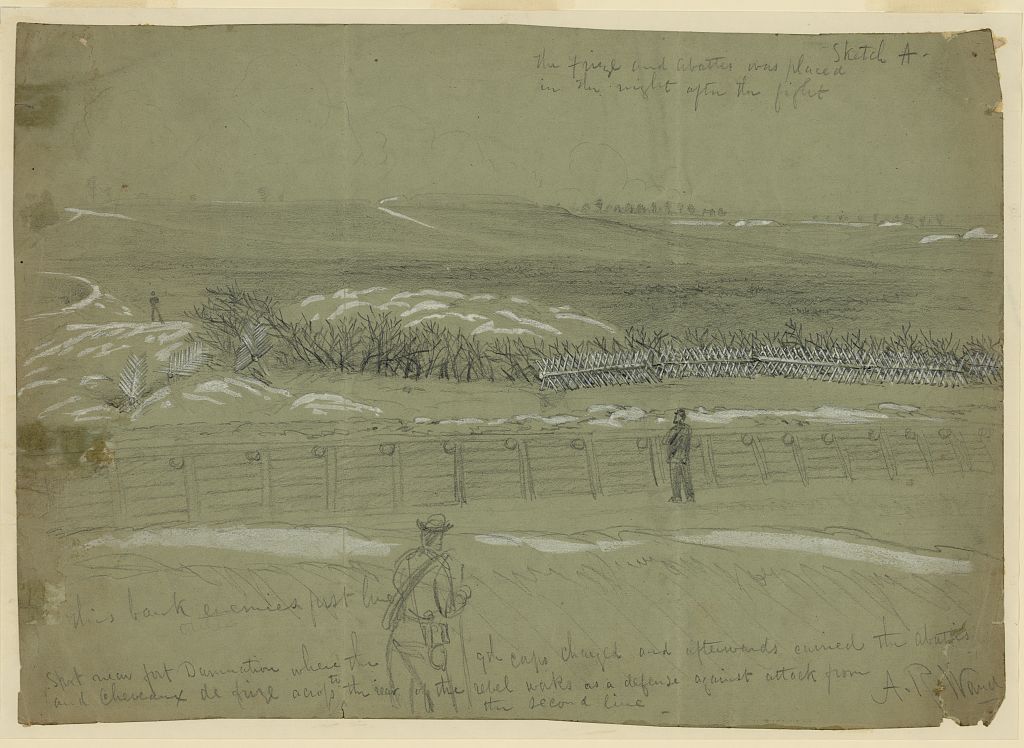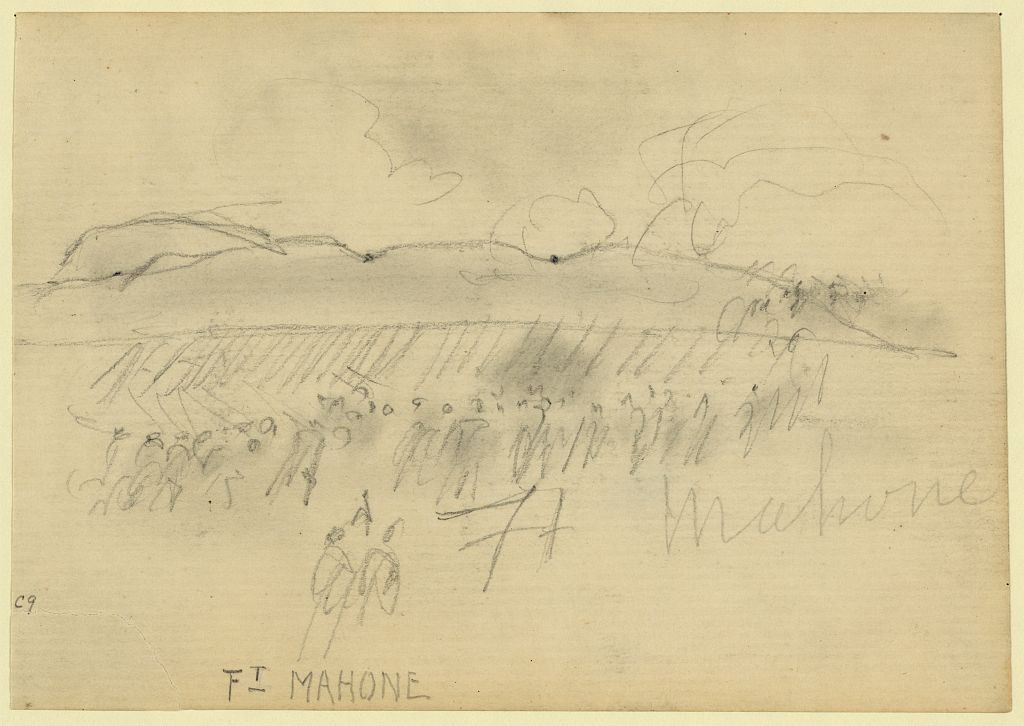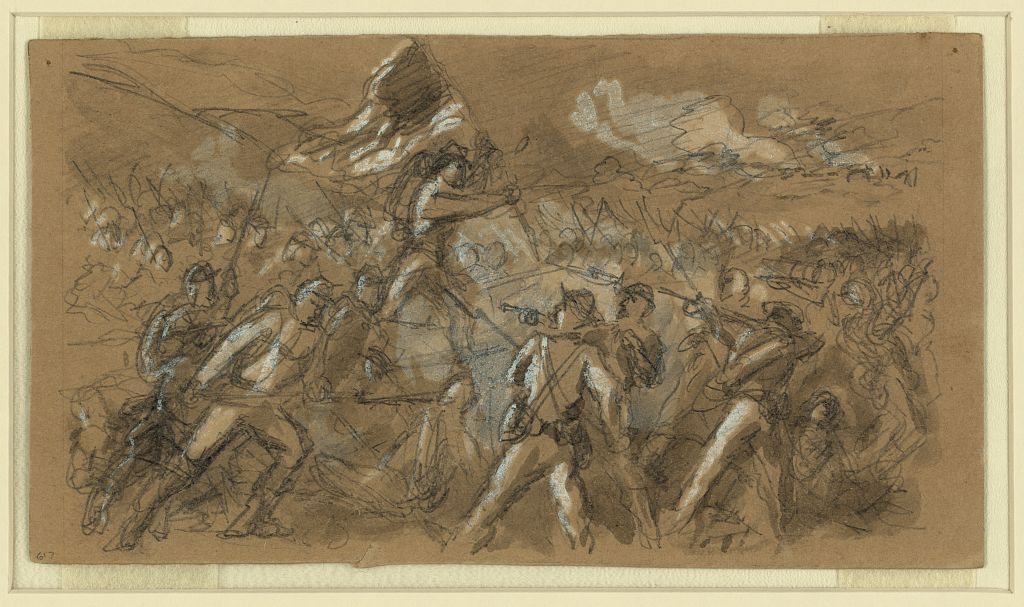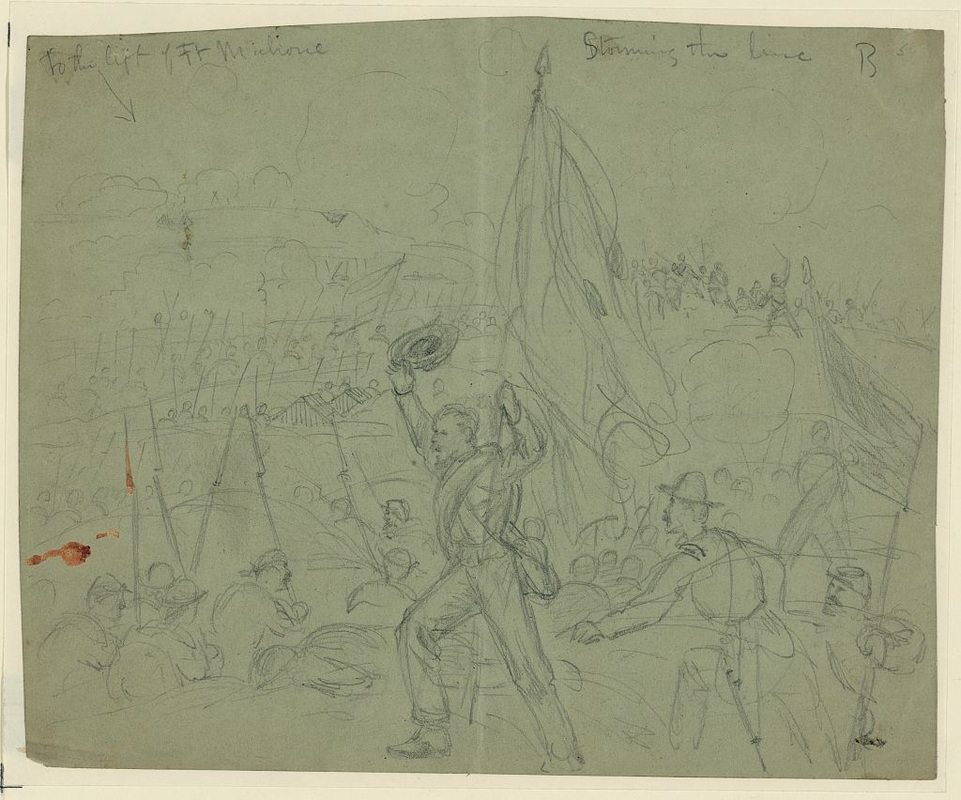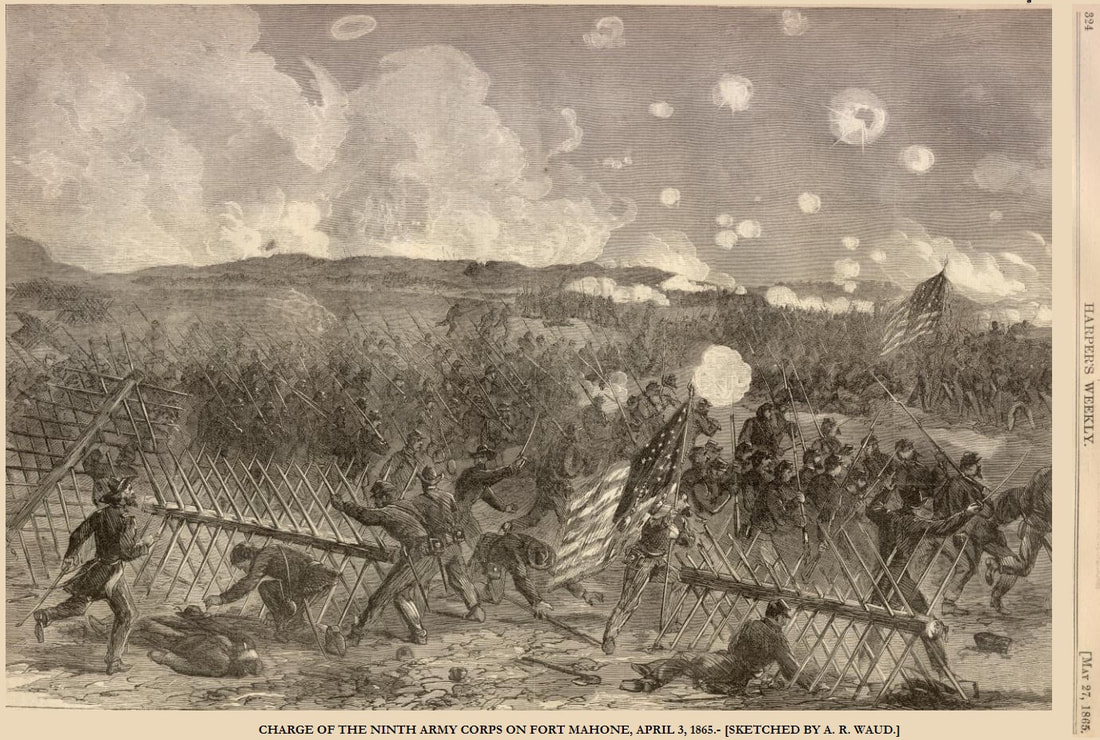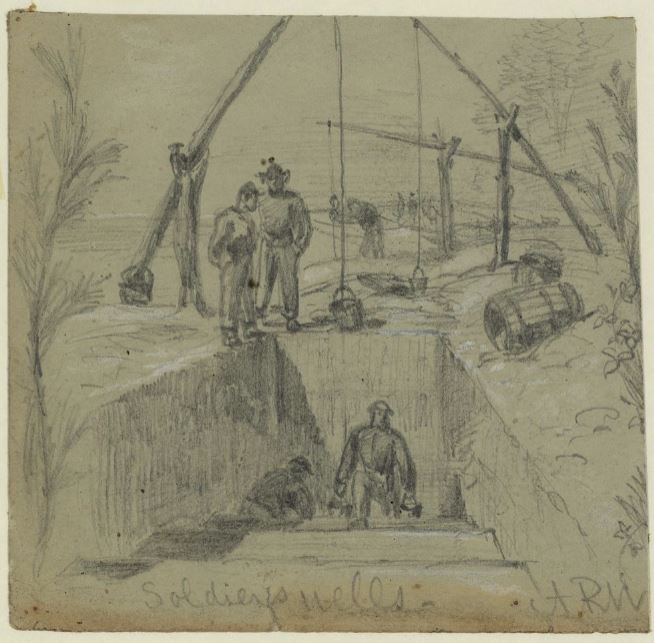Alfred Rudolph Waud, Special Artist at Petersburg
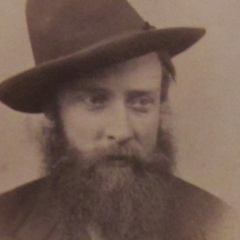 Alfred Waud from CDV collection of Theodore Lyman III. Courtesy Massachusetts Historical Society.
Alfred Waud from CDV collection of Theodore Lyman III. Courtesy Massachusetts Historical Society.
Alfred Rudolph Waud was a talented artist who could swiftly capture a landscape and events on paper with pencil or charcoal. The most thorough biography of Waud is found in Frederick E. Ray's Our Special Artist: Alfred R. Waud's Civil War (1994). Some of that information is summarized here.
Alfred Waud was born in London in 1828 and in his youth attended the School of Design at Somerset House, London. He worked in theater, painting scenes and backdrops. In 1850, he emigrated first to New York City then moved to Boston where he learned to prepare wood blocks for newspaper engravers. In the mid-1850s, he married Mary Jewett, and raised four children. In 1860, Waud returned to New York City to work as an illustrator for the New York Illustrated News. He was adept at depicting ships and nautical scenes.
When war began, Waud was sent to the front by the New York Illustrated News as a "special artist." In late 1861, Waud joined the staff of Harper's Weekly and worked exclusively with the Army of the Potomac for the rest of the war.
In May 1864, Theodore Lyman wrote of Waud who had attached himself to army headquarters: "Friend Waud is along and with us still and sojourns with the Engineers. He draws for Harper's Weekly, very good sketches he sends them, and very poor woodcuts they make thereof. His indignation has, long since given place to sarcasm; for W. is a merry & philosophic Bohemian!" [Lowe, Meade's Army (2007), pp. 166-167]
Waud worked in and around New Orleans after the war freelancing for various illustrated newspapers and, in 1891, died in Marietta, Georgia, while on a tour to sketch southern Civil War battlefields. Many fine examples of Alfred and his brother William's postwar work are curated by the Historic New Orleans Collection. This includes published woodcuts and original drawings that are available on-line.
The Library of Congress curates more than 1,200 of Alfred and his brother William Waud's sketches along with woodcuts and other related materials.
Alfred Waud was born in London in 1828 and in his youth attended the School of Design at Somerset House, London. He worked in theater, painting scenes and backdrops. In 1850, he emigrated first to New York City then moved to Boston where he learned to prepare wood blocks for newspaper engravers. In the mid-1850s, he married Mary Jewett, and raised four children. In 1860, Waud returned to New York City to work as an illustrator for the New York Illustrated News. He was adept at depicting ships and nautical scenes.
When war began, Waud was sent to the front by the New York Illustrated News as a "special artist." In late 1861, Waud joined the staff of Harper's Weekly and worked exclusively with the Army of the Potomac for the rest of the war.
In May 1864, Theodore Lyman wrote of Waud who had attached himself to army headquarters: "Friend Waud is along and with us still and sojourns with the Engineers. He draws for Harper's Weekly, very good sketches he sends them, and very poor woodcuts they make thereof. His indignation has, long since given place to sarcasm; for W. is a merry & philosophic Bohemian!" [Lowe, Meade's Army (2007), pp. 166-167]
Waud worked in and around New Orleans after the war freelancing for various illustrated newspapers and, in 1891, died in Marietta, Georgia, while on a tour to sketch southern Civil War battlefields. Many fine examples of Alfred and his brother William's postwar work are curated by the Historic New Orleans Collection. This includes published woodcuts and original drawings that are available on-line.
The Library of Congress curates more than 1,200 of Alfred and his brother William Waud's sketches along with woodcuts and other related materials.
Alfred Rudolph Waud -- "In Front of Petersburg" drawn for General Meade
Upper left: "Enemies first line of earthworks our lines below and in front. Inscribed above image: Smoke of locomotive on Petersburg and Richmond RR." Lower right: "This sketch was made at the request of Genl. Meade, for his use, from a tree used by the signal officers. It took over an hour and a half rebel sharpshooters kept up a fire at me the whole time. Inscribed upper right: Smou[ldering?"
Alfred Rudolph Waud -- Federal assaults on Jerusalem Plank Road, April 2, 1865
Alfred Waud evidently had ample time to study the enemy's works in front of Fort Sedgwick as he produced a number of sketches and details from there. He also appears from his annotations to have been present when the Ninth Army Corps assaulted at dawn of April 2, 1865, overran Confederate Batteries 25 and 27, and then held the ground against repeated desperate counterattacks during the day. Waud depicted the intricate appearance of the chevaux-de-frise obstacles and sketched their use by the Federal attackers, who broke apart the the prickly hedges, heaved them onto their shoulders, and deposited them chaotically beyond the batteries to defend their own captured ground. These events were described as happening at "Fort Mahone" or "Fort Damnation," which generally referred to the salient that wrapped around and across Jerusalem Plank Road; this would include Batteries 25,26, and 27, and Fort Mahone proper, as well as the heavy Columbiad Battery in the rear. None of the sketches (or photographs) were from within "Fort Mahone" proper, a detached outwork a quarter mile west of the plank road.
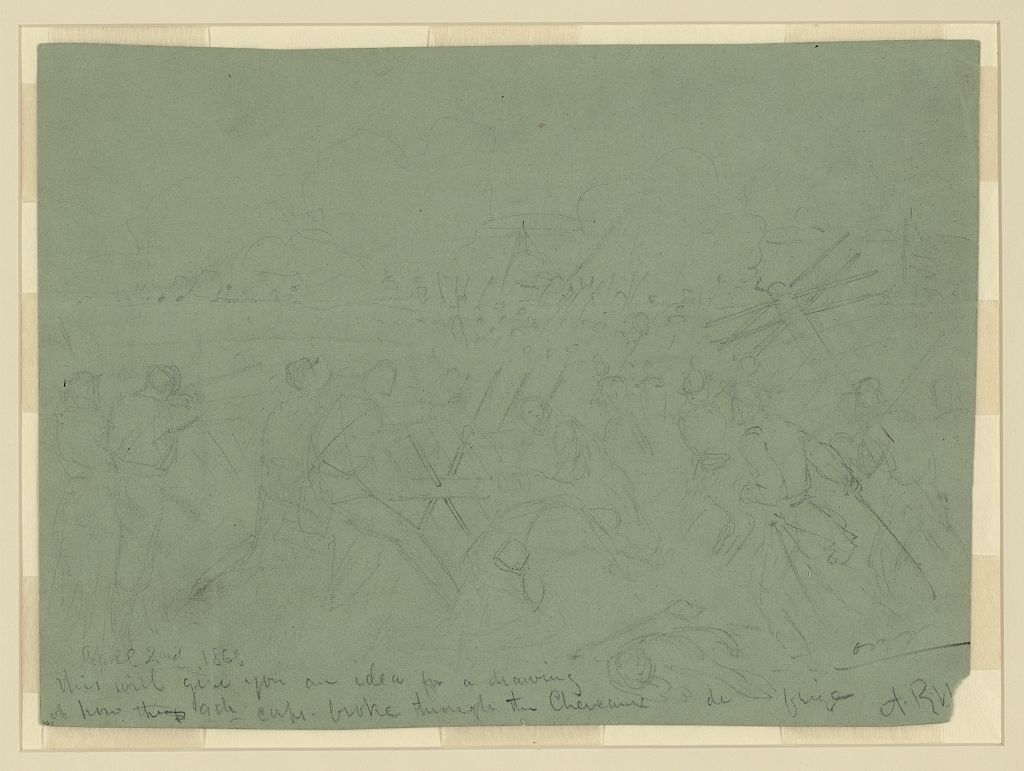
"9th Corps attacking Ft. Mahone better known as Fort Damnation," drawing by A. R. Waud [DRWG/US - Waud, no. 428 (A size)] "Inscribed below title: It was not daylight; but a good many dead and wounded. Men rushing over the enemies line. Inscribed vertically right margin: cheveaux de frise etc. Inscribed upper right: Have no time to finish this."
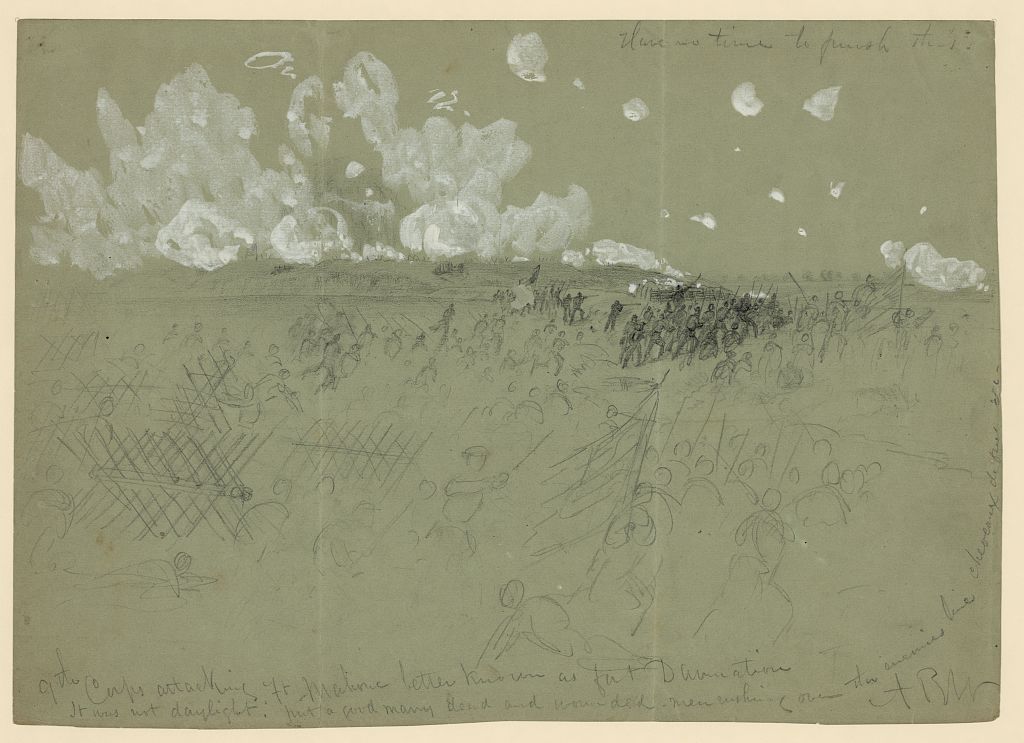
"9th Corps attacking Ft. Mahone better known as Fort Damnation," drawing by A. R. Waud. Inscribed below title: It was not daylight; but a good many dead and wounded. Men rushing over the enemies line." Inscribed vertically right margin: "cheveaux de frise etc." Inscribed upper right: "Have no time to finish this."
Photographs taken on the day after the fighting here capture the attackers' reuse of the chevaux-de-frise.






